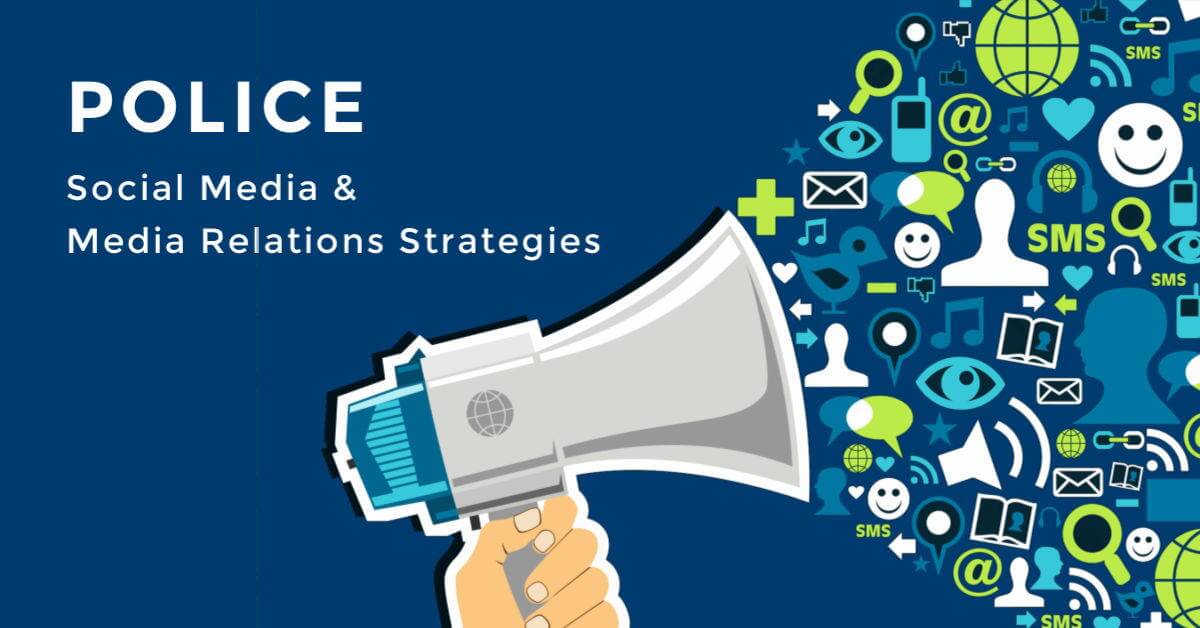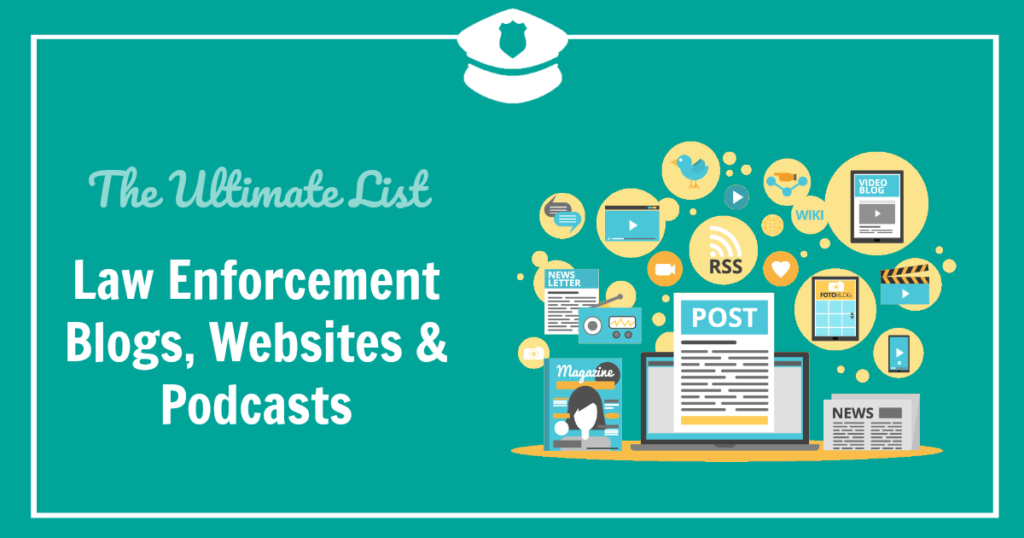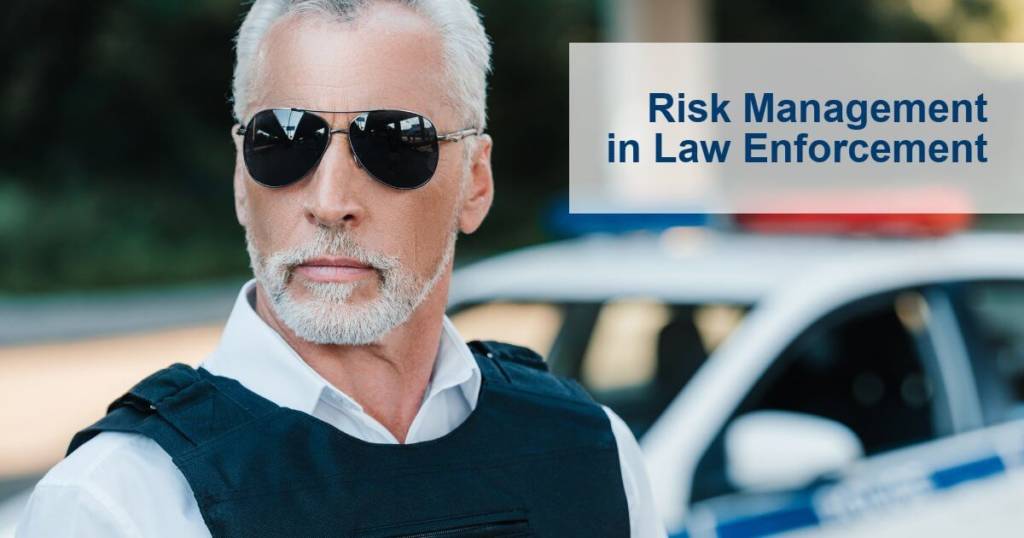Capt. Denton Carlson, public information officer for the San Ramon (Calif.) Police Department, was sitting in a POST Command College classroom when he received word that a traffic fatality had shut down a major roadway in his home city, 450 miles away.
On duty managing his department’s social media feeds, Capt. Carlson used his phone to post a full report on Twitter, knowing that was the first place the media and the public would look for details about the incident and its aftermath. He also sent a targeted text message alert informing affected residents about traffic disruption and detours.
Social media, he said, especially Twitter in cases like this, has become an essential communication and police media relations tool for law enforcement to “get the information out to the media and the public in a rapid-fire succession.”
The internet has brought about significant changes in the ways that police communicate with the press and the public. Social media, in particular, has expanded the range of law enforcement communication channels while also offering greater immediacy and enabling direct-to-citizen outreach.
However, while police departments are utilizing social media more than ever before, these relatively new online platforms are just part of the overall communications picture. Working directly with the media is still an essential function for law enforcement leaders, especially during important news events such as major crimes, life-threatening storms, officer involved shootings, etc.
This means that law enforcement leaders, especially those in command positions, must also be skilled at communicating effectively with the media through press conferences, public statements, news releases and even old-fashioned telephone inquiries.
Read on for police media relations and social media strategies, including what platforms work best for what purposes, and how both social media and law enforcement agency websites can be used to improve police public relations and communicate more effectively with both the media and the public.
Police Media Relations
Police chiefs and other law enforcement leaders are often called upon to be the voice of their department in public settings such as on-camera interviews and press conferences.
Sometimes this is in response to something positive, such as a crime solved or a community event. However, more often police leaders are called upon to be the bearers of bad news, to share information and insight about high-profile incidents, or to respond to criticism of the department or its officers.
PoliceOne.com offers six general guidelines for handling such situations:
- Pre-plan: Prepare a “worst-case scenario” public information release policy regarding events such as an officer-involved shooting, a mass casualty incident, an active shooter response, or high-profile arrest or use of force incident. Command staff should consult with their unit commanders and legal team to determine what can and cannot be revealed.
- Transparency: Seize the opportunity to be transparent and explain laws and procedures with the public, while also making sure to correct any false narratives or incorrect information that may have been given out by the news media.
- Verify the facts: Confirm information before releasing it to the media. That is, information should be taken from a credible and reliable source, not someone guarding the outer perimeter of a crime scene. Do not speculate. Once the information is released, it cannot be retracted. Whenever possible, have a third party and legal team vet the information being released before giving it to the media.
- Speak with one voice: Choose one spokesperson from the organization, especially regarding incidents that may unfold over extended time periods. Conflicting information from multiple police sources can create the appearance of a cover-up or a lie. Make sure the spokesperson has had enough training to be the face and voice of the organization.
- Explain the release of information policy throughout the organization: Be sure that all members, sworn and civilian, understand the rules, and enforce disciplinary measures for breaking them. Nothing can be more damaging than an “unnamed source” with inside information who releases falsehoods to the media. Explain that leaking sensitive information can ruin an ongoing investigation, and possibly one’s career.
- Get the message out quickly. Once a preliminary investigation has been conducted to address major points of the incident, craft a press release and send it to the media. Live interviews should not stray too far from the press release. Caveats should be given such as: “The investigation is ongoing, and more information will follow. This is a brief from what we know right now.”
Many experts also strongly emphasize the value of building relationships with reporters and the media outlets they represent. This can help your department realize more balance in the coverage it receives — with occasional “good news” stories along with the ongoing news about crimes and the wide range of challenging law enforcement situations.
Though police media relations have evolved dramatically in the era of the internet and social media, face-to-face contact with media outlets is still a vital part of the job. In addition to practicing the strategies detailed above, the most effective public information officers are often those who have made it a point to develop outstanding communication skills.
[RELATED] Police Communication Skills Matter More Than Ever: Here’s Why >>
Police Strategies for Effective Use of Social Media
The International Association of Chiefs of Police (IACP) reports that social media offers several important advantages over traditional forms of media.
Immediacy – Social media allows news to come straight from the source in real time, whereas print newspapers have to wait for the next publication and television news outlets have to get a reporter and crew to the scene.
Interaction – While most traditional forms of communication tend to be one-way, social media facilitates conversations and interactions among users.
Audience – By adding social media to the mix of communication channels, law enforcement agencies can connect with audiences that have typically been difficult to reach.
IACP also offers comprehensive resources for law enforcement leaders and departments looking to use social media as responsibly and effectively as possible. Through its Center for Social Media initiative, the organization offers strategic guidance in four key areas:
- Getting Started: A review of what social media is and what it means for law enforcement.
- Strategy Development: Determining your goals and identifying the resources needed.
- Policy Development: Policy guidance and legal considerations, including an IACP model policy.
- Putting it into Action: Tutorials and guides on setting up social media pages.
In his role as a public information officer, Capt. Carlson emphasizes understanding exactly what you are trying to accomplish with any given post and understanding which social platform or combination of platforms will be best suited to accomplish those goals. He said that the purpose of law enforcement communication on social media typically falls into one of the following categories:
Humanizing the Department and its Officers
Whether it’s rescuing a resident from peril, taking a moment to skateboard or shoot hoops with some neighborhood kids or countless other day-in-the-life scenarios, police “feel-good stories” are great for public relations. The front-line platforms for this tend to be Facebook and the departmental website.
Providing Helpful Information to the Community
Is there a community policing or neighborhood event coming up? Does the department offer home checks for residents who are on vacation? From drug prevention initiatives to bicycle safety programs and more, Facebook is a familiar and effective platform for engaging the community to attend events or take advantage of public services.
In addition to using social media for outreach, Carlson encourages law enforcement agencies to be sure that their departmental website is a comprehensive, well-organized, user-friendly clearinghouse for all information the public may be seeking about programs, services, contact information and more.
Collecting Information from the Community
The police obviously can’t be everywhere, so it is helpful to build a positive rapport with community members who might provide valuable information about anything from a crime spree to a manhunt to any number of other law enforcement scenarios. Sometimes it is also possible to gather video clues or evidence from residents whose homes are equipped with surveillance cameras.
Whether sharing info with the public or reaching out for assistance, Carlson said his department has had great success using Nextdoor, which describes itself as “the private social network for your neighborhood.” Now available in more than 236,000 neighborhoods in the U.S. and beyond, the service has considerable reach in California and is growing fast elsewhere too. “It provides a hyperlocal platform,” said Carlson. By posting and distributing a message, “we can hit almost 50% of our population.”
Communicating During a Crisis
Twitter is a highly effective tool for crisis communications in law enforcement, said Carlson, who cited the example of California’s ongoing battle with wildfires. “Everybody is talking about evacuation plans. How can you notify people?” he said, explaining that social media can be an effective channel to disseminate important information to both affected citizens and members of the media.
Communicating with the Media
One of the most important aspects of relations between police and the media is the need to quickly and accurately spread the news. Today, Twitter has become a go-to source for news media seeking official police information about important events to share with the public. With its #hashtag format, Twitter enables the media and the public at large to follow a communication thread simply by utilizing the designated hashtag to get a chronological view of all dispatches on the topic in question.
Carlson said he realized the full impact of Twitter’s role in communications between police and the media while watching television news coverage on July 7, 2016, the night that a gunman killed five police officers and injured nine others in Dallas. On CNN, the broadcast used actual screenshots of the Dallas PD Twitter feed to help tell the story of the tragic shooting.
In addition to the discussion above about Twitter, Facebook and Nextdoor, many law enforcement departments are also using other social media platforms to support their mission in a variety of ways.
What About Instagram, YouTube & Snapchat?
Not every law enforcement agency will use the full palette of social media platforms. However, in addition to Twitter and Facebook, some departments are also finding creative ways to use Instagram, YouTube and Snapchat.
Instagram: A photo- and video-based social platform, Instagram can be “a very useful tool for law enforcement,” according to a “Social Media 101” post published by the Department of Justice’s COPS (Community Oriented Policing Services) program. “Instagram can help your agency manage its image and enhance the brand of your city.”
One example of an agency whose police social media strategy uses Instagram to offer residents an inside look at the department, and also to spread smiles (see its April Fool’s Day post about a feral pig joining the K-9 unit), is the Laguna Beach (Calif.) Police Department, which has over 18,000 Instagram followers. The Portland, Maine, PD also uses its Instagram account for recruiting; during a recent visit, its welcome message read: “NOW HIRING! 10 officers to attend the August 2019 police academy. $10,000 sign on bonus!”
YouTube: The Google-owned video platform is not a top priority for most police departments, but some of the larger ones have found effective ways to use it. For example, the Los Angeles Police Department (21,000 subscribers) greets visitors to its channel with a mission-centric message titled “Our L.A. Story.” It also publishes newsy videos like “Hotel Robber Nabbed by Good Samaritans Visiting Los Angeles for Martial Arts Tournament” (1 million views).
However, even though dozens of departments across the nation scored community relations points in the summer of 2018 by creating music videos for the widely viewed Lip Sync Challenge, going viral should not be a regular goal of law enforcement social media posts, said Carlson.
Snapchat: The small percentage of law enforcement agencies that use Snapchat do so for the reason you would expect — to connect with young people. Examples of this include using quick videos and photos to share a virtual ride-along with a patrol officer.
“Using Snapchat is another way for us to communicate with our community and gives us the ability to reach a younger audience,” Capt. Mike Ishii said in the Department of Justice’s “Social Media 101” post.
[RELATED] 21st Century Police Technology Presents Opportunities and Challenges >>
Police Public Relations & Social Media Best Practices
Be Tactical
Carlson, a 20-year law enforcement veteran whose background includes SWAT activities, suggests bringing a “tactical” approach to your social media and police public relations strategy, just as you would to other aspects of the law enforcement mission.
This includes:
- A high-level awareness of your objectives with each communication
- Offering social media and media/public relations training to the entire team, especially those most closely involved with the social media accounts
- Conducting reviews and “post mortems,” just as you would after a strategic operation, to analyze what went right or, occasionally, wrong
Be Professional
Law enforcement professionals function in a highly stressful environment, and sometimes the way officers communicate with one another internally may be less appropriate for public-facing communications. From Facebook and Twitter and other social media posts to all messaging on the department’s website, everything must be done with extreme sensitivity to the professionalism and importance of the overall mission.
Get a Second Pair of Eyes
“You have to look at it from the public’s perspective” and really analyze how your message will be received, said Carlson, who regularly asks colleagues for feedback on specific social media and website items before posting them live. The most effective messaging will often adopt a tone that is professional but also friendly, helpful and community-minded.
Be Responsive, Not a ‘Digital Bullhorn’
When using social media, whether for public relations of getting information out to the news media, law enforcement agencies must understand that the communication cannot be a one-way street. “You can’t use social media as a bullhorn,” said Carlson. “It has to be a two-way communication platform.”
When the public communicates with the department via social media, “the expectation is that you’re going to get a response,” he said. In addition to increasing engagement around positive posts, this means that criticism and negative feedback must also be handled promptly and with the utmost professionalism.
This does not mean you have to be available 24/7, said Carlson, “but you should respond in a timely manner to any messages that are out there because social media platforms give you the avenue to create that two-way messaging and two-way communication between the community and your agency.”
Don’t Focus on ‘Going Viral’
“Our goal as a law enforcement agency should ever be to be the next viral sensation,” said Carlson. “We are not in the business of ‘Hey, look at us. This is how cool we are.’ It’s ‘We are here to serve you. This is what we do.’ We should be in there promoting what we do and how we do it well, and keeping it professional the whole way through.”
Be Authentic, Honest & Polite
Additional social media and media relations guidelines for public-facing organizations, offered by Entrepreneur.com and other sources, include the following:
- Always try to be authentic and transparent on behalf of the department or agency in anything you send out.
- Be polite and don’t engage in arguments even if provoked. If you disagree, do so respectfully.
- Speak in a professional, courteous manner, and avoid technical jargon.
- Try to add value. Provide worthwhile information and perspective.
- Avoid plagiarism at all costs. Document all sources and give credit where credit is due.
- Avoid posting anything that could be considered slanderous, libelous or hurtful.
- Don’t post any material that could be considered profane or discriminatory.
- Never use inappropriate language, or harass or threaten anyone.
Always be honest and use your best judgment in all situations.
Create a System of Communication to Reach Your Residents
In addition to serving as his department’s public information officer and social media coordinator, Capt. Carlson also teaches on the faculty of the University of San Diego’s online Law Enforcement and Public Safety Leadership master’s degree program.
One of the courses he teaches, “Communication for Law Enforcement Leaders,” features an in-depth segment on “Online Communication: The New Face of Public Safety,” which outlines the various strategies that agencies can use to effectively leverage the online environment, including departmental websites and social media platforms.
Carlson often advises his students: “You have the opportunity as a leader within your agency to create a system of communication to reach your residents, to reach the community that you serve in a professional manner, and you can be that conduit of information,” he said, urging them to “take on that challenge” of strategically using social media to benefit both their agencies and the citizens they serve.





